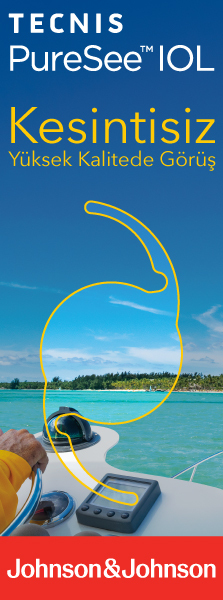2Uz. Dr., Medeniyet Üniversite Göztepe EAH, İstanbul - TÜRKİYE
3As. Dr., Medeniyet Üniversite Göztepe EAH, İstanbul - TÜRKİYE Purpose: To evaluate the intraocular pressure (IOP) changes following intravitreal dexamethasone implant and timing of ocular hypertension control
Material and Methods: A prospective study was conducted in patients who had ozurdex injection with diagnosis of macular edema secondary to various retinal diseases. The IOP was measured at baseline,day 1,week 1 and monthly until reinjection due to recurrence (range 3-6 months)
Results: Twenty five eyes of 24 patients (13 males; 54%) were evaluated. Most of them had macula edema secondary to retinal vein occlusion (n=19). The preoperative mean IOP was 15.2±2.6 mmHg and 16.3±2.6 (p=0.048) at week 1, 18±3.7 (p<0.001) at month 1, 20.2±4.7 (p<0.001) at month 2, 18.3±4.4 (p=0.006) at month 3 respectively. The mean IOP was not significantly altered at any other time point (for all P > 0.05). An IOP of higher than 25 mmHg was present in 32% and 28% of patients had an increase of ?10 mmHg. Wound leakage and hypotony (IOP <6 mmHg) were not observed in any of the eyes. The maximum value of IOP was 32 mmHg and measured at month 2. IOP rises were well controlled with topical antiglaucoma therapy. The drops prescribed after Dex implant were stopped within 6 months postinjection except for one patient who developed secondary glaucoma. No filtration surgery or IOP-lowering laser therapy was required.
Conclusion: Dex implant showed a good safety profile about ocular hypertension. Because high level of statistically significant changes were observed at month 1 and 2, we suggest that the IOP changes should be evaluated at this time point.
Keywords : Dexamethasone implant, ocular hipertension, macula edema




